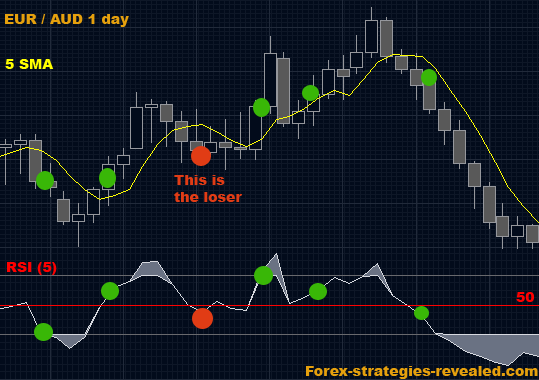
There is no clear answer, but investors need to use the P/E ratio to determine whether or not it accurately reflects the company’s valuation. A higher P/E ratio isn’t necessarily bad, and the same way that a low P/E ratio isn’t good. However, stocks with P/E ratios in this range usually will have higher-than-expected earnings growth, and those are the stocks you should look for. Analyzing a company’s P/E ratio is vital for making an informed investment decision. Generally, a stock with a higher P/E compared to its peer group is considered overvalued and the one with a lower P/E is considered undervalued. However, one should be cautious before making such a conclusion as explained below.
Even the best companies go through periods when they are unprofitable. Investors should also know the differences between the trailing and the forward P/E ratio. The trailing P/E represents the P/E ratio of the stock based on the earnings https://currency-trading.org/cryptocurrencies/cointelegraph-bitcoin-ethereum-blockchain-news/ over the last 12 months, while the forward P/E ratio is calculated based on the expected next 12 months. Growth stocks will often have P/E ratios above 25 or, in some cases, are high-quality companies with a solid competitive advantage.
How we make money
This number tells you the extent to which earnings cover interest payments owed to bondholders. The higher the ratio, the more coverage the company has for its debt payments. For investors who are looking to invest beyond diversified mutual funds or ETFs, individual https://forex-world.net/brokers/fbs-review-2021-is-fbs-a-scam-or-legit-forex/ stocks can be a profitable option. But before you start buying individual stocks, you’ll need to know how to analyze their underlying businesses. It is essential to consider other valuation metrics and evaluate the company’s future growth prospects.

It means little just by itself unless we have some understanding of the growth prospects in EPS and risk profile of the company. An investor must dig deeper into the company’s financial statements and use other valuation and financial analysis methods to get a better picture of a company’s value and performance. The P/E ratio doesn’t factor in future earnings growth, so the PEG ratio provides more insight into a stock’s valuation. The PEG is a valuable tool for investors in calculating a stock’s future prospects because it provides a forward-looking perspective.
What To Buy: Why The Price-Earnings Ratio Is A Useless Indicator
Since these companies are expected to grow earnings faster, the P/E ratio tends to be higher. The justified P/E ratio above is calculated independently of the standard P/E. In other words, the two ratios should produce two different results. If the P/E is lower than the justified P/E ratio, the company is undervalued, and purchasing the stock will result in profits if the alpha is closed. If Stock A is trading at $30 and Stock B at $20, Stock A is not necessarily more expensive. The P/E ratio can help us determine, from a valuation perspective, which of the two is cheaper.

An investment in Coca-Cola (KO) in the 1980s and a more recent investment in Apple (AAPL) when each was selling for a low P/E ratio have made billions for Berkshire Hathaway shareholders. Similarly, a lower P/E ratio than the industry average does not essentially mean that a stock is undervalued or is a value stock and is a good bargain currently. It could also imply that the earnings growth prospects of the company are not attractive enough to justify a higher valuation multiple. It helps the investor in comparing a stock with its own historical P/E or with P/Es of competitors or even the broader sector/market average. That helps the investor understand whether the stock is overvalued or undervalued, and to invest accordingly.
Adjusting the Price-Earnings Ratio Gap
While investors can analyze the price-to-earnings ratio intrinsically and based on the company, other ways exist. This reflects that investors are willing to pay a lot more for a company whose earnings are expected to increase, increasing its valuation. In this article, we’ll carefully analyze what factors influence the analysis of the price-to-earnings ratio and its importance when picking stocks and deciding whether or not to invest in them. Investors are often confused about the differences between growth stocks and value stocks.
Large-cap companies with hefty profits often have lower P/E ratios than small caps that might be hungry for capital. So if someone asks, “Do you want a high or low P/E ratio?” the answer might only sometimes https://trading-market.org/what-is-fibonacci-sequence/ be low. A high P/E stock can still be a great buy and a low P/E stock can still be a loser. Company A has a P/E ratio of 8, meaning that investors are getting a dollar profit for every eight they invest.
How To Understand The P/E Ratio
However, PE ratios can also be very high when overall earnings fall considerably,” Johnson says, adding that the S&P 500’s high PE ratio of the early 2000s was largely due to falling earnings. P/E ratios are helpful but flawed metrics when it comes to evaluating stocks. Compared to industry peers or averages, finding low P/E stocks could mean the broader market has missed undervalued gems.
- It’s up to the investor to look at the PE ratio and dive deeper to understand whether there are legitimate reasons for a company’s ratio to be higher or lower than would be expected.
- These filings will provide a great amount of information, including financial statements for the most recent year.
- Differentiating between overvalued stocks and growth stocks comes down to further analysis.
- So far, the stock does not deserve to be so weak, based on its year-over-year (YOY) sales growth.
However, this doesn’t mean that stocks with high P/E ratios cannot turn out to be good investments. Suppose the same company mentioned earlier with a 40-P/E ratio (stock at $40, earned $1 per share last year) was widely expected to earn $4 per share in the coming year. This would mean (if the stock price didn’t change) that the company would have a P/E ratio of only 10 in one year’s time ($40 divided by $4), making it appear very inexpensive. Thus, when an investor is comparing P/E ratios from two companies as potential investments, it is important to compare companies from the same industry and with similar characteristics. The earnings makeup of a company is often difficult to determine.